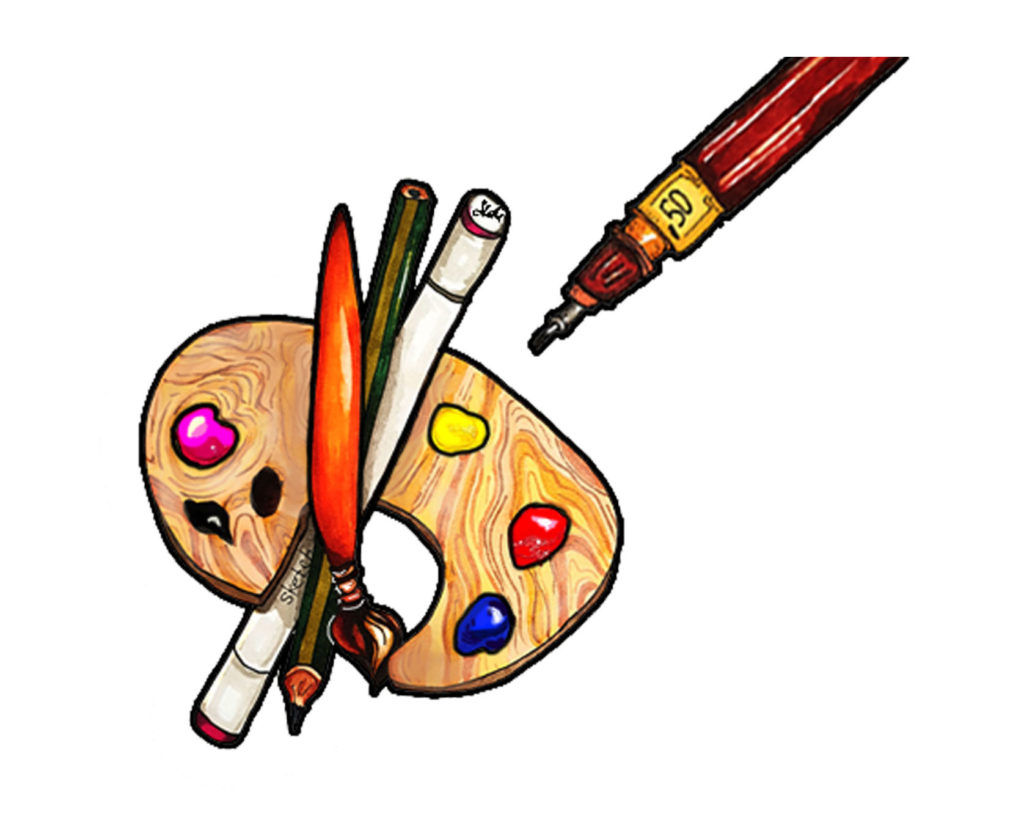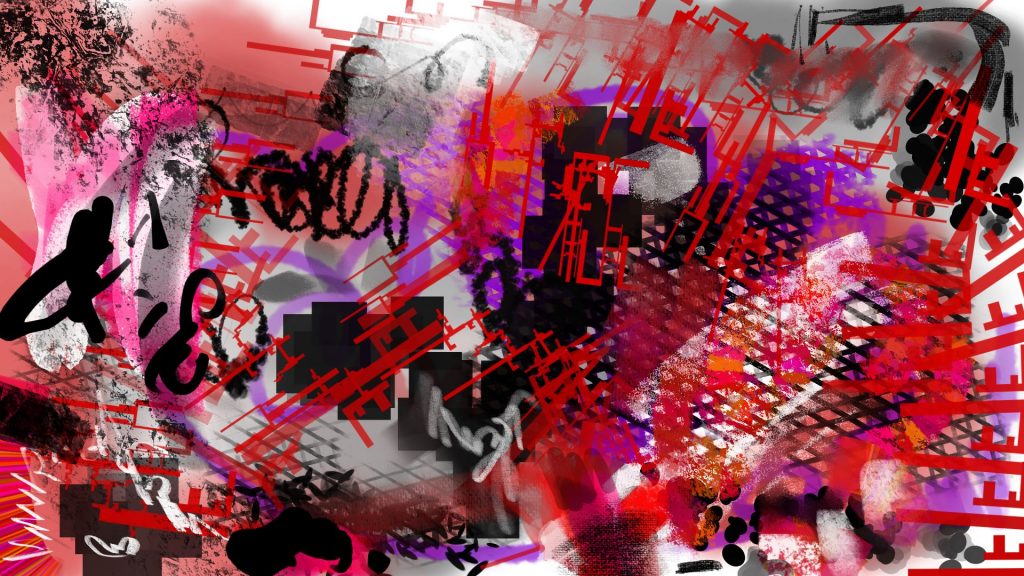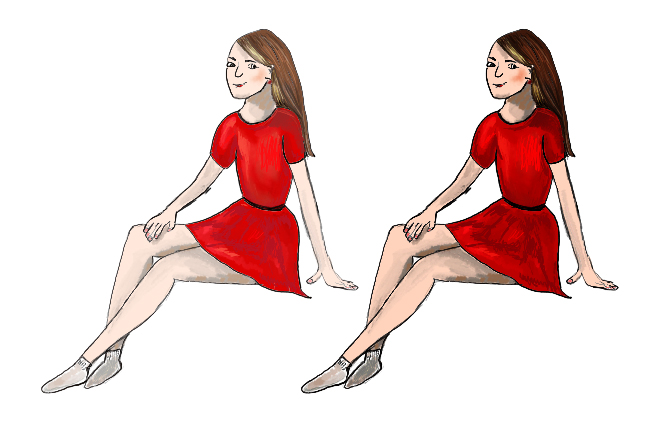Drawing “like a pro” involves learning the basics of color theory, brush technique, composition, and lighting. Here are some tips to help you improve your drawing skills.
Start with a good foundation
Before you start painting, make sure you have all the materials you need, such as brushes, canvas, and paint. Take time to prepare the surface and make sure it is clean and ready to paint.

When it comes to materials, it’s important to have different brushes on hand because different brushes are better for different techniques. For example, round brushes are great for working out small details, while flat brushes are better for shading and creating broad strokes. It is also important to have different canvases or surfaces to paint on, such as a stretched canvas, cardboard or watercolor paper. As for preparing the surface, it is important to make sure that it is clean and free of debris or dust. This will ensure proper paint adhesion and a smooth and even painting surface. If you are painting on a stretched canvas, make sure it is properly stretched. If you are using a watercolor board or paper, make sure it is properly mounted and secured. We also recommend priming the canvas before painting. This will help create a smooth and even surface that the paint will adhere to, and will also prevent the color from spreading over the surface. The primer comes in acrylic, oil, and glue-based. By taking the time to prepare the surface and making sure you have all the materials you need, you will set yourself up for success and allow yourself to focus on the creative process of painting.
Learn color theory
Understanding how colors interact with each other is essential to creating harmonious and dynamic compositions. Explore the color wheel and learn about complementary, analogical, and monochromatic color schemes.

The study of color theory is an important step in understanding how to use color effectively in your paintings. Color theory is the study of how colors interact with each other and how they can be used to create harmonious and dynamic compositions. One of the most important tools for understanding color theory is the color wheel.
The color wheel is a visual representation of primary, secondary and tertiary colors and how they relate to each other. The primary colors are red, blue, and yellow, and they cannot be obtained by mixing other colors. The secondary colors, orange, green and purple, are obtained by mixing the primary colors. Tertiary colors are obtained by mixing primary and secondary colors.
There are several different color schemes that can be used to create different effects in your paintings. One of the most popular color schemes is the complementary color scheme, which uses colors that are opposite each other on the color wheel. This creates high contrast and can be very striking. Another popular color scheme is a similar color scheme that uses colors next to each other on the color wheel. This creates a more harmonious and subtle effect. A monochromatic color scheme uses different shades and tones of the same color. This creates a cohesive and unified image. It is important to study the color wheel and learn about different color schemes, as this will help you understand how colors interact with each other and how to use them effectively in your paintings. Also, it’s always a good idea to experiment with color schemes and see how they work in your paintings. With practice, you’ll be able to create beautiful and dynamic color compositions in your artwork.
Practice working with a brush
Different strokes can create different effects, such as blending, texturing, and layering. Experiment with different brush types and sizes to find the ones that work best for you. Practicing different brush techniques is an important step toward becoming an accomplished artist.
Different brush strokes can create different effects such as blending, texturing and layering, and learning how to use them effectively can greatly improve the quality of your paintings. One of the most basic brush strokes is the flat brush stroke, which is created with a flat brush and is great for creating wide areas of color. Another important stroke is the round brush stroke, which is created with a round brush and is great for working out fine details and creating lines. There are also other strokes that can be suitable for blending and creating soft edges.
Another aspect of the brush technique is the pressure you apply to the brush. Light pressure will create thin, delicate lines, and heavy pressure will create thick, bold lines.
Different types and sizes of brushes can also affect the end result of your painting. For example, synthetic brushes are great for acrylic painting because they are durable and can withstand the harsh chemicals of acrylic paint. On the other hand, natural hair brushes are great for oil painting because they can hold more paint and create a smoother surface. It’s important to experiment with different types and sizes of brushes to find the ones that work best for you and your painting style.
It is also important to take care of your brushes, as they are an investment and will last longer if they are cleaned and stored properly. As you practice, you will be able to learn different brush techniques and create a wide range of effects on your paintings.
Note the composition
A well-composed painting will have a clear focus, good balance and movement, and will lead the viewer’s eye through the painting. Study the rule of thirds and other composition techniques to improve your paintings.

Composition is an important aspect of painting because it determines how the elements of a painting are arranged and how they relate to each other. A well-composed painting will have a clear focal point, good balance and movement, and will lead the viewer’s eye through the painting. One of the most popular composition techniques is the rule of thirds, which involves dividing a painting into thirds horizontally and vertically, creating a grid of nine equal parts. This can help create a sense of balance and movement in the painting by placing the focus at one of the intersection points of the grid. Another compositional technique is to use diagonal lines to create movement and direction of the viewer’s gaze through the painting. This can be accomplished by placing the focus at the intersection of diagonal lines or by using lines to create a sense of movement in the painting.
Other composition techniques include the use of negative space, that is, the space around and between the subject of the painting, to create balance and a sense of depth. The use of symmetry and repetition can also create a sense of balance and order in the painting. The use of color and contrast can also be used to create a sense of depth and movement in a painting. It is important to study and experiment with different compositional techniques to improve your paintings and develop your own unique style.
Composition is a powerful tool that can greatly affect the overall impression of a painting, so taking the time to master it can make a big difference in the quality of your work.
Explore light and shadow
Light and shadow play a crucial role in creating depth and realism in a painting. Explore how light falls on different surfaces and how shadows change depending on the time of day.

The study of light and shadow is an integral part of becoming an accomplished artist. Light and shadow play a crucial role in creating depth and realism in a painting because they create the illusion of three-dimensionality and help create a sense of space. Understanding how light falls on different surfaces and how shadows change depending on the time of day is an important skill for any artist.
One of the basic concepts of understanding light and shadow is the use of light and shadow, that is, the use of strong contrasts between light and dark areas to create a sense of depth and volume in a painting. This can be achieved by studying how light falls on different surfaces and how it creates highlights and shadows.
Another important concept is the use of light and shadow to create the illusion of texture in a painting. By studying how light falls on different textures such as wood, metal or fabric, the artist can create a sense of depth and realism in their paintings. The time of day also plays an important role in light and shadow, as the direction and intensity of light changes throughout the day. Understanding how light and shadow change at different times of the day, such as morning, afternoon, and evening, can help an artist create more convincing and realistic paintings.
It is important to study light and shadow by observing your surroundings and experimenting with different lighting settings and techniques. This will allow you to understand how light behaves and how it can be used to create depth and realism in your paintings. With practice and study, you can master the use of light and shadow and create more convincing and realistic paintings.
Experiment and take risks
Don’t be afraid to experiment with new techniques and styles. The best way to improve your drawing skills is to step out of your comfort zone and take risks. Experimenting and taking risks are important aspects of becoming a successful artist. It is important not to be afraid to try new techniques and styles in order to develop as an artist and improve your drawing skills.
One of the best ways to experiment is to try new materials and techniques, such as using different types of paints, brushes, or canvases. This will allow you to find new ways to express yourself and discover new techniques and styles that may not have been available to you before. Another way to experiment is to try painting in different styles or genres. For example, if you’re used to drawing landscapes, try drawing still life or portraits. This will allow you to develop your skills and discover new ways to express yourself.
Taking risks can also be a great way to improve your drawing skills. For example, if you are used to drawing in a realistic style, try experimenting with an abstract or impressionistic style. This will allow you to develop your skills and discover new ways to express yourself. It’s important to remember that experimenting and taking risks can be difficult and uncomfortable, but it’s also a necessary part of becoming a successful artist. By pushing yourself out of your comfort zone and taking risks, you can improve your drawing skills and develop your own unique style.
It’s important to keep an open mind and not fear failure. Even the most successful artists had to experiment and take risks to achieve what they have today. With practice and persistence, you can improve your drawing skills and develop your own unique style.
Keep practicing
Drawing “like a pro” doesn’t happen overnight, it takes time and practice to master the skills. The more you draw, the better you become. Practice is necessary to become an accomplished artist. Drawing like a professional is not something that happens overnight; it takes time and practice to master the skills. The more you draw, the better you become. By taking the time to draw regularly, you can improve your skills and develop your own unique style. It is important to practice different techniques such as strokes, color mixing, and composition to master them.
One way to practice is to create still lifes or take pictures of objects and practice drawing from them. This will help you improve your observation skills and learn to capture the essence of the subject on the canvas. Another way to practice is to copy the work of other artists. This will help you understand the techniques and styles of other artists and learn how to apply them to your own work. It is also important to attend classes and workshops to learn from more experienced artists. This will allow you to learn new techniques, get constructive feedback on your work, and get advice on how to improve your skills.
Practice is not always easy, there will be times when you encounter obstacles and feel frustrated, but it is important to be persistent and keep moving forward. With time, patience and practice, you will get better at drawing and be able to create your own unique art and style.
Conclusions
Remember, painting is a personal and creative process, so don’t be afraid to develop your own unique style. With time, patience and persistence you will be able to create beautiful and professional looking paintings.
Starting with a good foundation is an important step in creating a successful painting. Having the right materials and proper surface preparation will ensure that your painting will have a solid foundation to build upon.